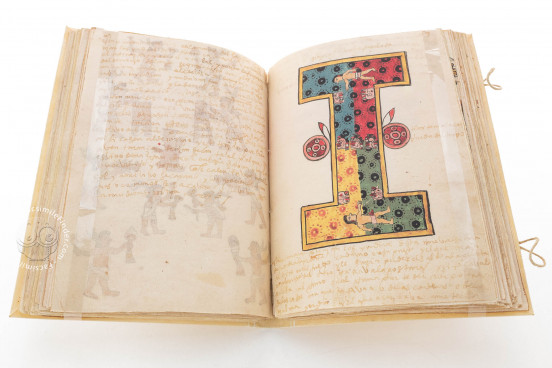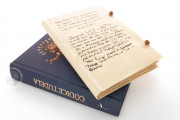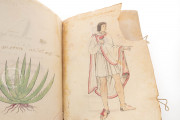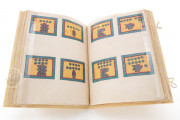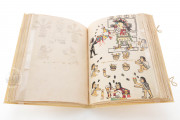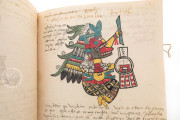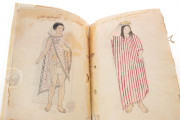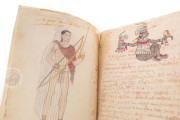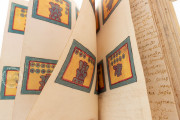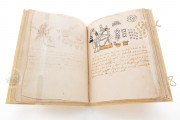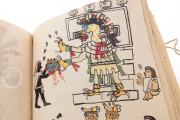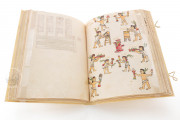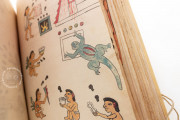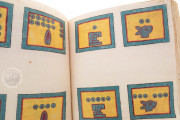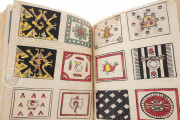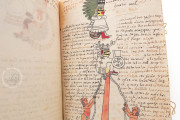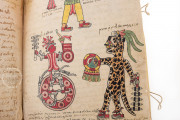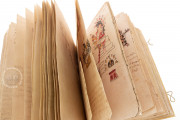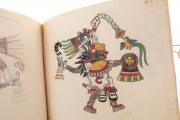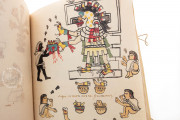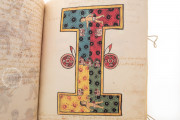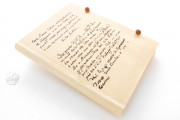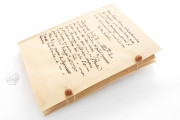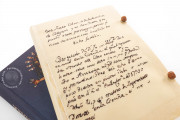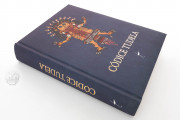The Codex Tudela—formerly known as the Codex Museo de América—is a richly illustrated manuscript recording religious ceremonies, customs, rituals, and festivals of the Aztec of the Valley of Mexico. Dating from 1530 to 1554, it was created as an ethnology of Aztec culture before the Spanish arrival. Depictions of birds, deities, and animals represent ideas and objects of Aztec religious life and cycles of the native calendar, the tonalpohualli. The Codex Tudela includes texts in the Nahuatl and Spanish languages. It has 6 full-page and more than 100 smaller illustrations, many of which fill the top half of a recto and introduce an explanatory text.
The Tudela Codex is a member of the Magliabechiano Group of postconquest manuscripts that rely on a common, lost manuscript. Other members of the group include the Codex Ixtlilxochitl and the Codex Magliabechiano, after which the group is named. Tudela boasts much more extensive text than the other manuscripts in the group and is thus a valuable resource for understanding aspects of Aztec culture.
Illustrations in Two Traditions
Three anonymous artists are responsible for the paintings in the Codex Tudela. Two, believed to be indigenous, painted in the established pictographic manner of ancient Mesoamerica. The third artist employed the prevailing illusionistic style of contemporary Europe and was responsible for six full-page images of figures in traditional native dress at the manuscript's beginning (fols. 2r-4v).
A Focus on Native Religion and the Calendar
The Codex Tudela's encyclopedic content includes the explication and illustration of religious festivals, most introduced by the representation of a deity; local customs, including those related to marriage and funerals; the counting of years (fols. 77v-83v); the designs of ritual cloaks (fols. 85v-88r); and the divinatory calendar of 260 days. It concludes with a remarkable representation of a divinatory deerskin (fol. 125r).
An Extensive Descriptive Text
The text of the Codex Tudela includes labels for depicted figures and events and prose narratives that are both different from and longer than the texts in the Codex Magliabechiano, with which it shares most of its pictorial content. The manuscript's scribe, writing in Secretary script, used several inks of varying shades of brown and gray, often making corrections by crossing through text and offering an alternative version in lighter ink
A Twentieth-Century Discovery
The manuscript surfaced in a private home in La Coruña in the 1940s. It was secured for the Museo de América by the museum's then deputy director José Tudela de la Ordén (1890-1973) after whom the manuscript is now named.
We have 1 facsimile edition of the manuscript "Tudela Codex": Códice Tudela facsimile edition, published by Testimonio Compañía Editorial, 2002
Request Info / Price
